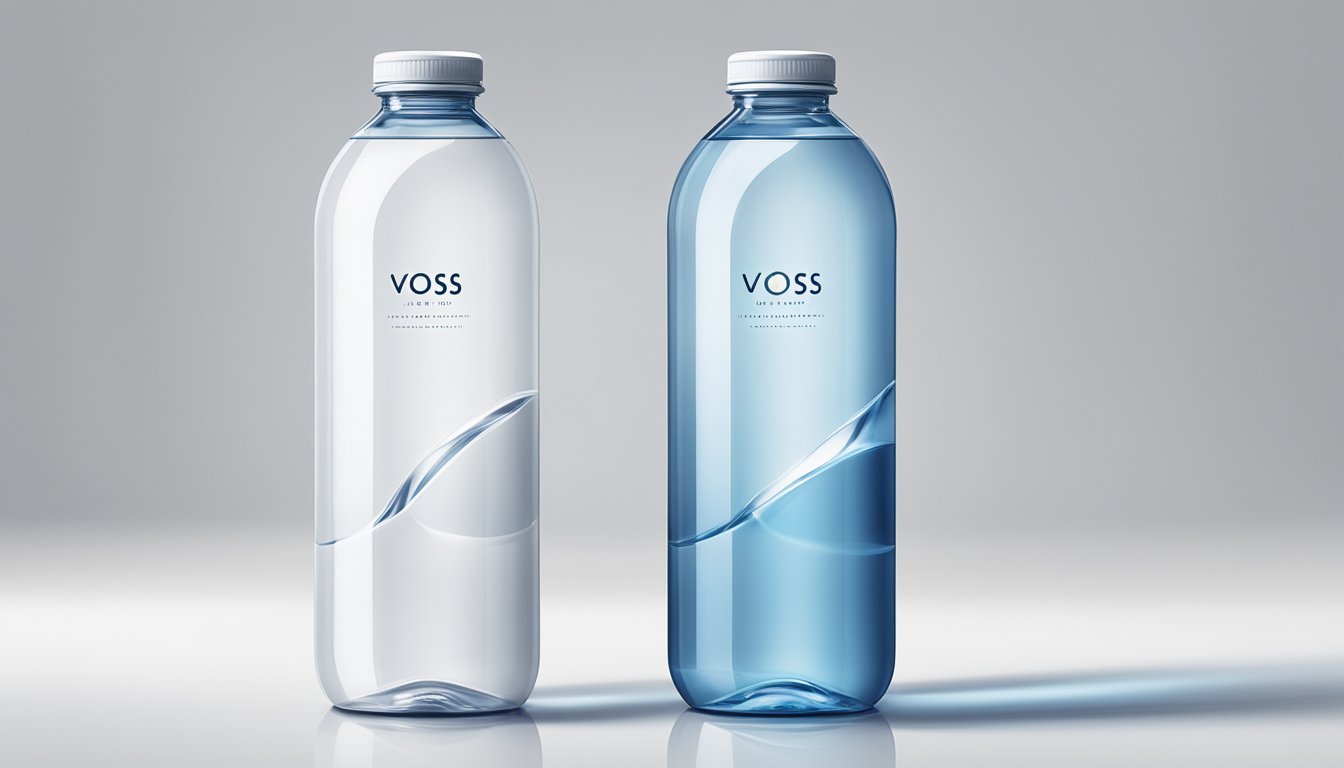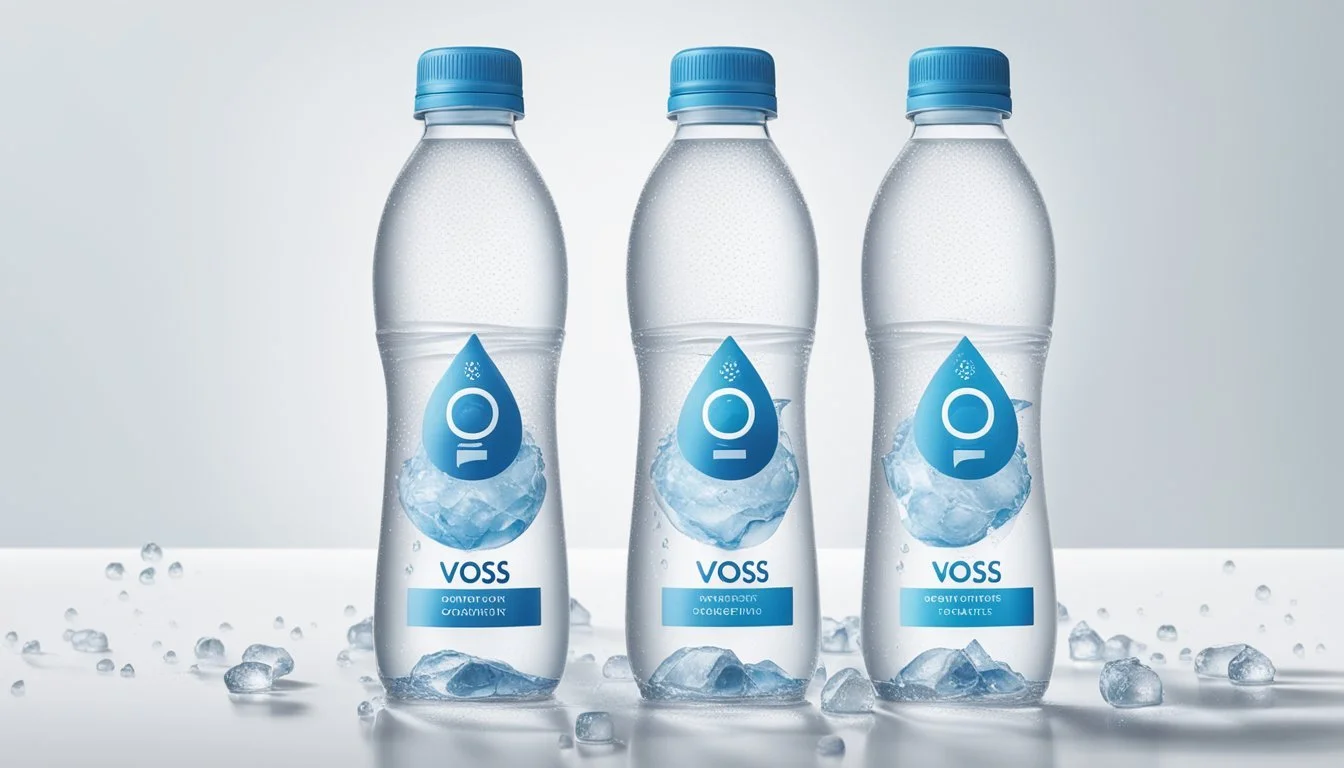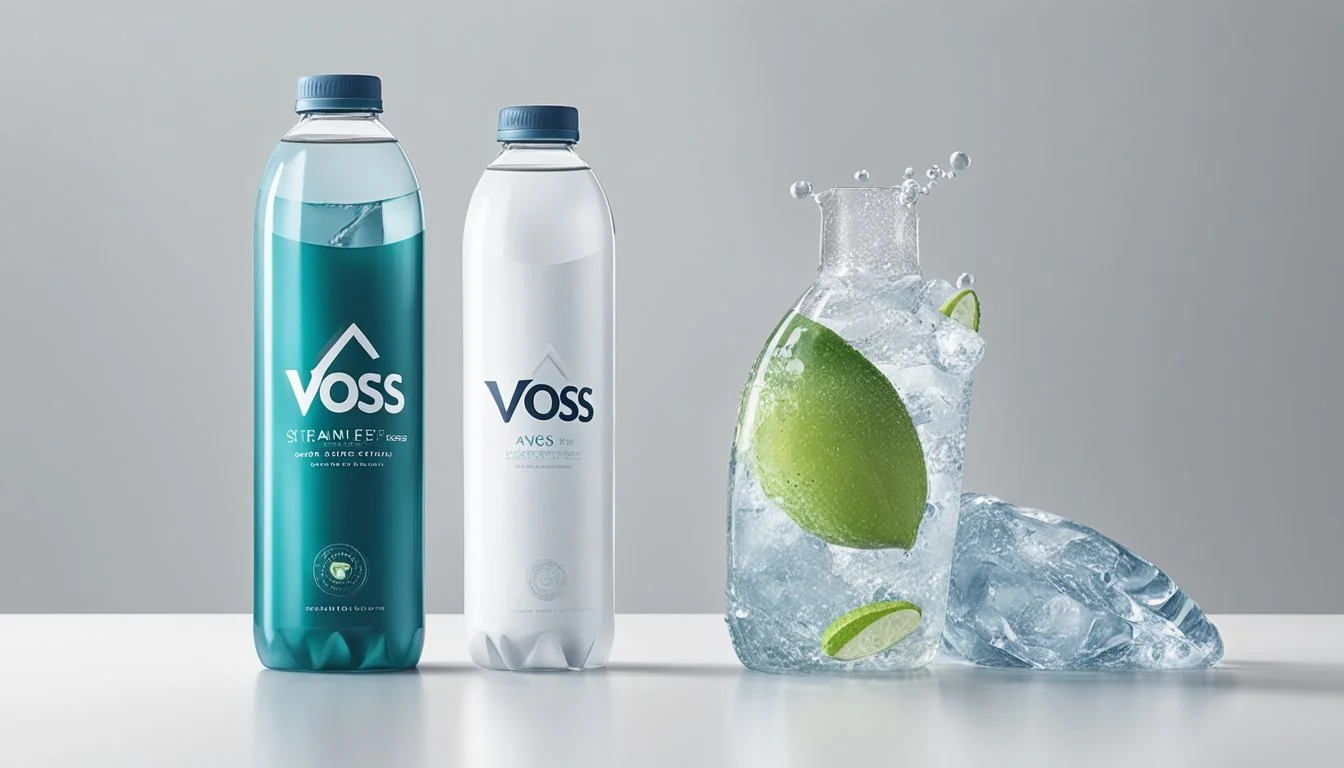Penta vs. Voss
Comparing Quality and Taste in Bottled Water Brands
When it comes to selecting bottled water, consumers are faced with a plethora of choices, each claiming purity, mineral content, and even health benefits. Among these, Penta and Voss stand out as premium brands that have managed to capture the interest of those who are willing to pay a little more for their daily hydration. The comparison between Penta, recognized for its ultra-purified drinking water, and Voss, known for its artesian water sourced from Norway, goes beyond just taste and taps into various factors including the purification process, source, mineral content, and packaging.
Penta water undergoes a patented 13-step purification process that includes not only filtration and ozonation but also UV light treatment, resulting in water that is free from impurities and contaminants. This extensive process is aimed at delivering a clean and crisp taste, with the promise of a pure hydration experience. Voss, on the other hand, is sourced from an artesian well in the untouched wilderness of Norway, providing naturally pure water without the need for extensive filtration. The brand's bottling process, which occurs at the source, ensures that the water maintains its freshness and mineral composition.
The decision between Penta and Voss is often not just about quenching thirst, but about consumer values and preferences. While both brands offer quality and taste, the factors of source sustainability, environmental impact of packaging, and the presence of naturally occurring minerals may play a significant role for consumers. Those who prefer a highly purified product may lean towards Penta, while individuals looking for natural artesian water with minimal processing may find Voss more appealing. The bottled water industry, with its variety of offerings, presents a unique proposition, and the choice ultimately rests on personal preference, with both Penta and Voss offering distinct experiences to the end consumer.
Understanding Bottled Water
When considering bottled water options such as Penta and Voss, it is important to understand the intricacies behind bottled water, including its definition, types, and the processes it undergoes before reaching consumers.
Definition of Bottled Water
Bottled water is drinking water packaged in plastic or glass containers for retail sale. It can come from a variety of sources, which include natural aquifers and underground springs, and may contain minerals and electrolytes that contribute to its taste and health benefits.
Types of Bottled Water
Spring Water: Originates from an underground spring and must be collected at the spring or through a borehole tapping the underground formation.
Mineral Water: Contains not less than 250 parts per million total dissolved solids (TDS) and is defined by its constant level and relative proportions of minerals and trace elements.
Purified Water: Water that has been processed to remove chlorine and other contaminants. It includes distilled water, deionized water, and water purified by reverse osmosis or other suitable methods.
Alkaline Water: This type has a higher pH level than regular drinking water, often achieved by adding mineral content like calcium, magnesium, and potassium.
Water Source and Collection
Bottled water brands source their products from various locations, ranging from deep aquifers to the French Alps. Companies like Penta and Voss may draw their water from protected springs or deep underground wells, filtering it naturally through volcanic rock which enriches the water with beneficial minerals.
Filtration and Purification Processes
The filtration process is imperative to ensure the purity of water. Here are common methods:
Reverse Osmosis: Removes heavy metals and dissolved salts.
Distillation: Evaporates water, leaving behind impurities and then re-condenses it.
Filtration through Charcoal or Carbon Filters: Eliminates chlorine and organic compounds.
Ultraviolet Light and Ozone Treatment: Used to disinfect water without chemicals.
Health and Safety Standards
When it comes to bottled water like Penta and Voss, consumers often prioritize the health and safety standards that these brands adhere to. This includes the oversight by regulatory authorities, testing for various contaminants, and the safety of the bottles used to package the water.
Regulatory Authorities and Standards
Both Penta and Voss are subject to strict regulatory standards to ensure the safety and quality of their water. In the United States, the Environmental Protection Agency (EPA) sets legal limits on over 90 contaminants in drinking water. Penta and Voss adhere to these standards, ensuring their bottled water is safe for consumption.
EPA Regulations: Monitors water quality for contaminants like lead and mercury.
International Standards: Both brands comply with respective national standards for water quality in the markets they operate.
Testing for Contaminants
Regular testing is conducted on both Penta and Voss water to identify any contaminants that could compromise safety.
Penta boasts a patented purification system that removes more contaminants than standard filtration methods.
Voss, sourced from Norway, boasts naturally pure water, but it still undergoes rigorous testing to maintain its quality.
Common tests look for:
Heavy metals: Lead, mercury
Microbial pathogens
Organic chemicals
Bottle Safety: BPA and Other Concerns
The bottles used by water brands are crucial components of health and safety standards. BPA (Bisphenol A) is a chemical commonly used in manufacturing plastic bottles and can seep into water, leading to health concerns.
Penta Water uses bottles that are BPA-free, ensuring that the water is not contaminated with this chemical.
Voss also uses BPA-free packaging, demonstrating its commitment to bottle safety and consumer health.
Both brands take additional steps to ensure the bottles are free from:
Other harmful chemicals
By maintaining high standards in regulatory compliance, frequent testing for contaminants, and the safe production of bottles, Penta and Voss strive to provide consumers with pure and safe bottled water options.
Brand Comparison: Penta vs. Voss
In the competitive market of bottled water, Penta and Voss are two brands that stand out for their unique selling propositions and commitment to purity. Here's an insight into their backgrounds, methods, and impacts.
Company Background
Penta Water is an American company with a focus on ultra-pure water designed for optimal hydration. Voss, on the other hand, hails from Norway and has positioned itself as a premium brand renowned for its distinctive bottle design and purity.
Water Source and Collection Methods
Penta sources its water from aquifers in the United States and places emphasis on the purity and origin of its water. Voss also draws water from an underground aquifer in Norway, with the environment around the source preserved to prevent contamination.
Filtration and Purification Techniques
Penta employs a patented 13-step purification process including reverse osmosis and the proprietary Hydro-7™ filtration method to remove impurities. Voss, conversely, touts its water as naturally pure and free from the need for extensive filtration, owing to the protected Norwegian ecosystem it originates from.
Taste Profile
The taste of Penta water is noted for being clean and free of any additives. Voss water also boasts a crisp taste profile that reflects its Norwegian origins and appeals to a market that appreciates a natural taste in water.
Mineral Content and Health Benefits
Penta water is infused with oxygen to enhance taste and hydration without adding minerals. Voss water contains naturally occurring minerals and trace elements but remains low in total dissolved solids, which it suggests contributes to its health benefits.
Packaging and Environmental Impact
Penta uses BPA-free plastic bottles, emphasizing health safety and recyclability. Voss originally became iconic for its glass bottles, but now also offers products in high-grade BPA-free PET bottles to lower environmental impact and cater to an on-the-go lifestyle, balancing luxury with sustainability.
The two brands showcase differing approaches to delivering high-quality water, each with distinct features that cater to their specific segments of the market.
Comparing to Other Popular Brands
When evaluating Penta and Voss bottled waters, it's crucial to consider how they stack up against other market offerings in terms of market presence, quality, price, and consumer sentiments.
Market Competition
The bottled water market features a variety of brands, each with unique selling points. Coca-Cola and PepsiCo are major players, with offerings like Dasani, Aquafina, and smartwater. Nestlé, owning several brands including Nestle Pure Life, Poland Spring, and San Pellegrino, also holds a significant market share. Companies like Fiji Natural Artesian Water and Evian have established themselves with premium waters. Essentia and Icelandic Glacial tout health benefits due to their ionized and high pH waters, respectively.
Comparative Analysis: Penta and Voss Against Competitors
Penta: Ultra-purified and boasting a proprietary filtration process that removes more impurities than typical brands.
Voss: Known for its pristine source and stylish packaging, Voss positions itself as a premium brand.
Fiji and Evian are similarly marketed as premium waters but have more established reputations and wide-scale acceptance. Essentia provides ionized water, which could be perceived as offering more health benefits than Penta's ultra-purification process. Dasani and Aquafina, while popular, are often criticized for taste and source transparency.
Price Comparison and Value
A quick glance at retail stores shows the following average price point hierarchy:
Brand Average Price (500ml bottle) Notes Voss $2.50 High due to premium packaging Penta $2.00 High due to purification Fiji $1.80 Price reflects artesian source Evian $1.50 Imported; valued for taste smartwater $1.40 Electrolytes for taste Nestle Pure Life $1.00 Widely affordable Dasani $1.00 Accessible, owned by Coca-Cola Aquafina $1.00 PepsiCo’s purified offer
Penta and Voss's higher price points reflect their premium branding and are notably higher than more widespread brands like Dasani, Aquafina, or Nestle Pure Life.
Brand Perception and Consumer Preferences
Consumer preferences vary widely with some prioritizing taste and others the brand story or health benefits. Penta is often associated with purity, while Voss is associated with luxury. In contrast, brands like Nestle Pure Life or Dasani are seen as more utilitarian choices. Market trends show a preference for environmentally friendly packaging, with Boxed Water and Just Water appealing to eco-conscious consumers. Starbucks's Ethos Water blends social good with hydration, contributing to public water programs with each purchase. The perceptions of these brands are also influenced by the popularity and marketing efforts of their parent companies, with consumers sometimes aligning their choices with brand loyalty.
Environmental and Ethical Considerations
When comparing Penta and Voss bottled water brands, one must evaluate their impacts on the environment and the ethics of their sourcing and production processes.
The Environmental Footprint of Bottled Water
Penta Water and Voss contribute to the environmental footprint of bottled water through different means. Bottle production, especially for water sold in single-use plastic bottles like Penta, requires significant resources. These plastics may take centuries to decompose, affecting ecosystems and wildlife. Voss, on the other hand, is often recognized for its glass bottles, which have a different environmental impact. Glass bottle production requires more energy upfront but can reduce pollution since glass is recyclable and does not degrade into harmful microplastics.
Penta: Primarily single-use plastic bottles, contributing to landfill and pollution.
Voss: Glass bottles, energy-intensive to produce but fully recyclable.
Ethical Sourcing and Sustainability Practices
Both Penta and Voss have measures in place to ensure the purity and safety of their water, but sustainability practices vary greatly. Voss reportedly sources its water from an aquifer in Southern Norway, which is reputed for being naturally protected and having a minimal impact on local ecosystems.
Ethical Sourcing for Each Brand:
Penta: Advertises absolute purity through a patented distillation process but provides less information on the sustainability of its source.
Voss: Touts the natural qualities of its Norwegian aquifer and the brand's efforts to maintain ecosystem integrity.
Consumer Trends and Eco-Friendly Alternatives
Consumers today are increasingly concerned with the environmental impact of bottled water and are seeking eco-friendly alternatives. Brands like Just Water and Boxed Water have made a mark by offering packaging that reduces environmental impact, such as cartons made from paper which is a renewable resource. For bottled water brands such as Penta and Voss, staying relevant means adapting to these consumer trends and providing more sustainable and eco-friendly options.
Consumer Demand: Rising for sustainable bottled water options.
Bold Steps Toward Sustainability:
Penta: Could innovate further to meet eco-friendly consumer demands.
Voss: Positioned to leverage its existing glass bottle for a premium sustainable image but could consider alternatives like recycled materials or refillable bottles.
Final Verdict: Which Water Brand is Superior?
When selecting between Penta and Voss as a superior bottled water brand, a comparison must consider hydration, purity, taste, and the presence of minerals that contribute to overall water quality.
Penta water prides itself on its ultra-pure drinking water, boasting a proprietary process that removes more impurities than standard filtration methods. Its selling point is purity, heavily focusing on the water's cleanup process to ensure it’s free from contaminants and additives. Penta's method claims to provide water that’s not just pure but also hydrating, because of its small-molecule structure which they suggest may hydrate more effectively.
On the other hand, Voss comes from Norway and is known for its distinct cylindrical bottle and its artisan origins. While its taste is often described as clean and fresh, Voss's brand appeal also lies in its mineral content, sourced from the Norwegian wilderness, that adds to the water’s flavor and could contribute to electrolyte balance for hydration.
Aspect Penta Voss Hydration Small molecule water Electrolyte balance Purity Ultra-pure process Natural environment Taste Pure Clean and fresh Minerals Minimal Naturally occurring
In conclusion, the choice between Penta and Voss for the superior water brand depends on the consumer's priority: if one values technological purity, Penta may have the edge; however, if the preference is for natural minerals and a refreshing taste with environmental origins, Voss stands out. Both brands have established reputations within their niches in the bottled water market, and this comparison underscores the varied appeals of different water brands.
Appendix and References
Sources Consulted:
Penta Water - Manufacturer's website for water quality reports and product specifications.
Voss Water - Manufacturer's website for water quality reports and product specifications.
Studies and Publications:
Scientific journals for research on hydration and water purity standards.
Industry reports on bottled water testing and consumer preferences.
Reference List:
Penta Water Quality Report: Detailed analysis provided by the manufacturer.
Voss Water Quality Report: Detailed analysis provided by the manufacturer.
FDA Guidelines for Bottled Water: U.S. Food and Drug Administration bottled water standards.
Additional Resources:
Resource Description Relevance Environmental Working Group Information on water quality and safety. Helps understand purity levels and possible contaminants in bottled water. Consumer Reports Independent testing results of bottled water. Offers a third-party perspective on bottled water brands.
Water quality data and health regulation standards were cross-referenced with the latest FDA and EPA guidelines to ensure the comparison between Penta and Voss water is up-to-date and accurate.
For a more comprehensive understanding, consumer reviews from various platforms and expert opinions in the realm of water quality were also considered, although subjective preferences are inherently variable and were not the prime focus of this comparison.
this section is designed to attribute the sources and references used in the analysis of Penta vs. Voss bottled water, ensuring transparency and credibility.






